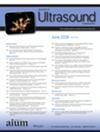Development of an Ultrasound-Based Clinical-Radiomic Nomogram for Predicting Histologic Subtypes in Focal Testicular Tumors
Abstract
Objectives
Testicular tumors are the most common solid malignancy among males aged 15–35. This study aimed to establish an ultrasound (US) based clinical-radiomic nomogram for the preoperative prediction of testicular tumors histologic subtypes, differentiating testicular germ cell tumors (TGCTs) from testicular non-germ cell tumors (TNGCTs) and then differentiating seminomas (SGCTs) from non-seminomatous tumors (NSGCTs).
Methods
This retrospective study included 148 patients with testicular tumors confirmed by pathology, with 120 cases of TGCTs, including 65 SGCTs and 55 NSGCTs. All patients underwent preoperative ultrasound examinations, and data on clinical information, US features, and radiomics features were collected. The Radscore model was constructed after feature selection. Independent risk factors were identified using univariate and multivariate logistic regression analysis. The nomogram model was assessed using the receiver operating characteristic (ROC) curve analysis and decision curve analysis (DCA).
Results
The TGCTs radiomics nomogram model achieved AUCs of 0.89 in both the training and validation datasets. The SGCTs radiomics nomogram model achieved AUCs of 0.93 in the training dataset and 0.91 in the validation dataset, surpassing the predictive performance of both Radscore and clinical models. The calibration curves showed that the nomogram estimation was consistent with the actual observations. DCA also verified the clinical value of the combined model.
Conclusions
The ultrasound-based clinical-radiomics nomogram has the potential to non-invasively discriminate the histologic subtypes of testicular tumors.

 求助内容:
求助内容: 应助结果提醒方式:
应助结果提醒方式:


